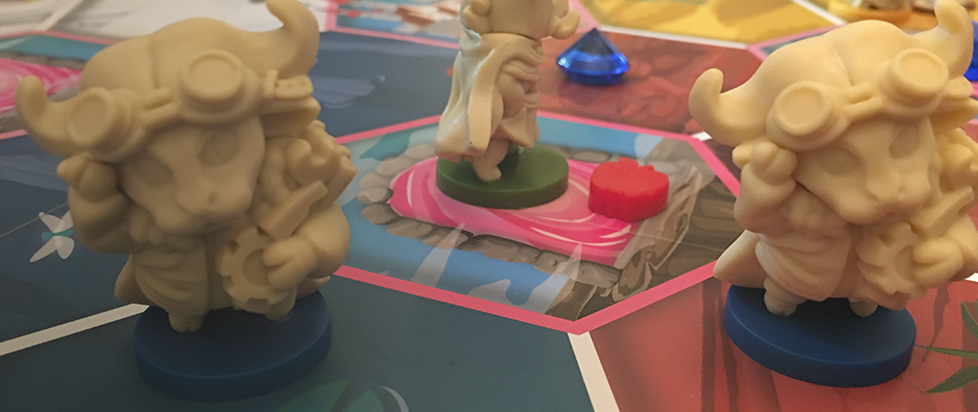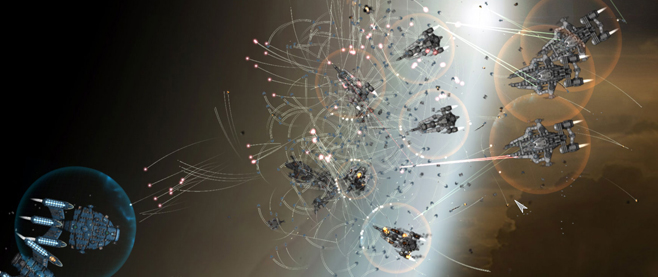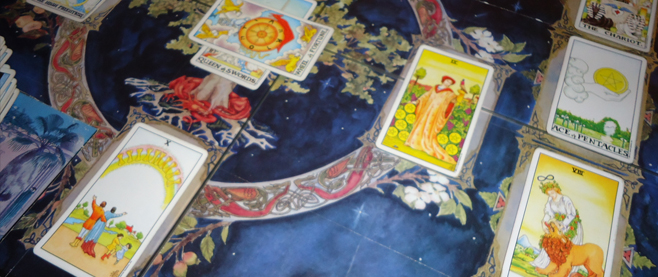
My Surprising Scythe
When Scythe released in 2016, it was to cacophonous fanfare. Praises for Jamey Stegmaier’s alternate history sandbox were sung in board game forums across the web. It rocketed up the Board Game Geek rankings, and rightly so; Scythe was one of the best new-to-us games that the Unwinnable team played in 2018. But for all the hype and success the game has seen, there’s no denying that there exists a high degree of inaccessibility. The open-ended gameplay and dual-purpose action selection has the potential to push some away, even if the production value is through the roof.
That’s where My Little Scythe comes in. It’s Scythe, but stripped down to its barest, most basic elements. Designed by father/daughter duo Hoby and Vienna Chou, it was built as a simplified alternative to Scythe proper. In leaving behind the dark and oppressive alternate-history theme, My Little Scythe is also loads more cheerful.
Gameplay is simple: on your turn, you choose to move, make, or seek. Each action is beholden to its own rules, yes, but the essence of My Little Scythe boils down to this trio of maneuvers. Compared to Scythe’s eight possible actions, this is a notable step down in complexity. It’s also a godsend for those who suffer extreme analysis-paralysis.
Where My Little Scythe departs most dramatically from its more complex namesake is in the concept of friendship. Choosing the seek action allows you to seed the board with apples, quests, and gems. If you give your opponent one of these collectables, you’ll gain a friendship point. Gain enough friendship points and you’ll earn one of four trophies needed for victory. It remains a competitive game, but there’s a sentiment of “no hard feelings” that underlies the whole thing. In this age of hyper-competitive miniatures games, offering a crisp, shiny apple to your opponent feels good.
My Little Scythe may be a simplification of a more complex game, but Stonemaier Games did not skimp on the production values. The player figures are adorable and beautifully molded. The game board is colorful and whimsical, and looks fantastic in play, while gem and apple tokens add surprising visual depth.
The first time our game group played My Little Scythe, we spent a fair amount of time afterward discussing our strategies. There was an air of mirth in that discussion that was strong enough to convince us to play a second game right then. The game’s 45 minute playtime is the perfect length for what it offers: a lighthearted
Since playing My Little Scythe, our group has moved on to Scythe proper. The latter has become one of our favorite games, and is something we look forward to playing often. That doesn’t mean that My Little Scythe is leaving my collection any time soon, though. My niece, who is four years old, loves board games, and My Little Scythe is sure to be a hit with her. It’s still a bit too complex right now, but I’m eagerly looking forward to the day when we can collect apples together.
My Little Scythe is a remarkable product, a between-the-lines game that manages to walk the line between simplicity and complexity. Strategic without being overwhelming. Elementary without being pandering. This is a balance that’s been tough for publishers to strike in the past, but the Chou duo have managed to nail it. My Little Scythe is something that everyone with a young gamer in their life ought to try.
A copy of the game was provided by the publisher




